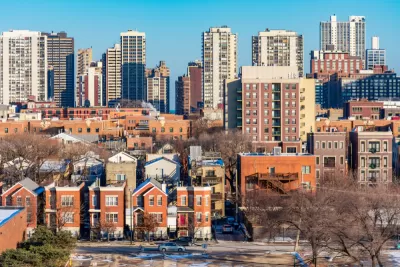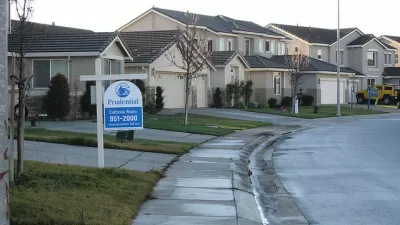A new study examines mortgage lending practices in racially homogenous neighborhoods for clues about how those neighborhoods differ from the aggregate, national market.

A new study, available online, examines the racial contours of the U.S. subprime lending boom, foreclosure crisis, and recovery surrounding the Great Recession.
"Existing studies reveal general lending patterns in these periods but fail to scrutinize racially homogeneous neighborhoods where outcomes often diverge from aggregate trends," writes author Tyler Haupert, a graduate student at Columbia University, in the abstract to differentiate the study from previous research.
The study uses data from 2005 and 2015, and finds a commonality to the pre-recession market and the post-recession market: "the gap between white borrowers’ comparatively high application approval rates and minority borrowers’ lower approval rates grows as the proportion of white residents in a target neighborhood increases."
The big takeaway: the racially homogenous neighborhoods function differently than the aggregated experience of the housing market.
The study is available in its entirety online, published by the Housing Policy Debate journal.
FULL STORY: Racial Patterns in Mortgage Lending Outcomes During and After the Subprime Boom

Maui's Vacation Rental Debate Turns Ugly
Verbal attacks, misinformation campaigns and fistfights plague a high-stakes debate to convert thousands of vacation rentals into long-term housing.

Planetizen Federal Action Tracker
A weekly monitor of how Trump’s orders and actions are impacting planners and planning in America.

In Urban Planning, AI Prompting Could be the New Design Thinking
Creativity has long been key to great urban design. What if we see AI as our new creative partner?

Cal Fire Chatbot Fails to Answer Basic Questions
An AI chatbot designed to provide information about wildfires can’t answer questions about evacuation orders, among other problems.

What Happens if Trump Kills Section 8?
The Trump admin aims to slash federal rental aid by nearly half and shift distribution to states. Experts warn this could spike homelessness and destabilize communities nationwide.

Sean Duffy Targets Rainbow Crosswalks in Road Safety Efforts
Despite evidence that colorful crosswalks actually improve intersection safety — and the lack of almost any crosswalks at all on the nation’s most dangerous arterial roads — U.S. Transportation Secretary Duffy is calling on states to remove them.
Urban Design for Planners 1: Software Tools
This six-course series explores essential urban design concepts using open source software and equips planners with the tools they need to participate fully in the urban design process.
Planning for Universal Design
Learn the tools for implementing Universal Design in planning regulations.
Appalachian Highlands Housing Partners
Gallatin County Department of Planning & Community Development
Heyer Gruel & Associates PA
Mpact (founded as Rail~Volution)
City of Camden Redevelopment Agency
City of Astoria
City of Portland
City of Laramie





























